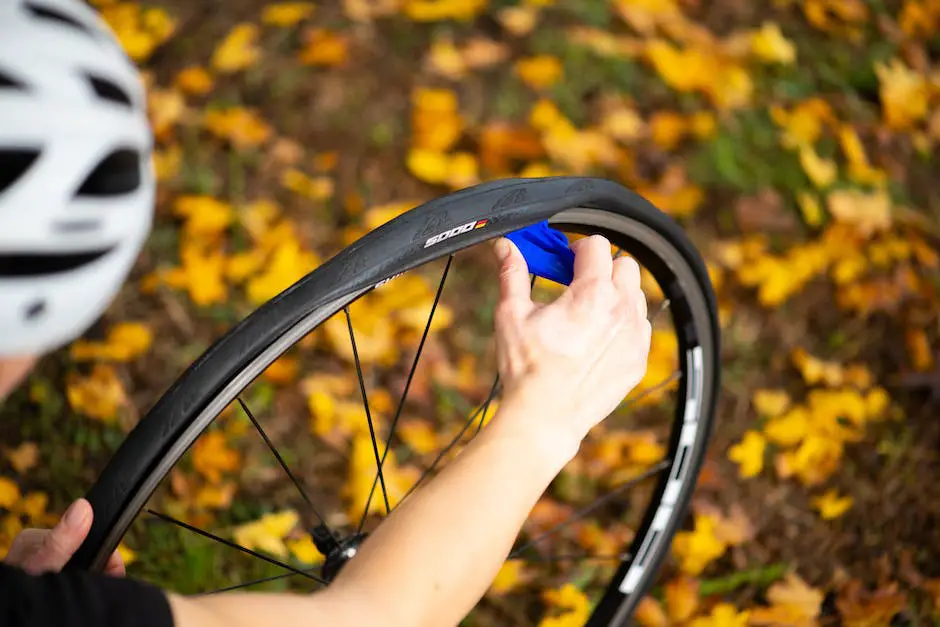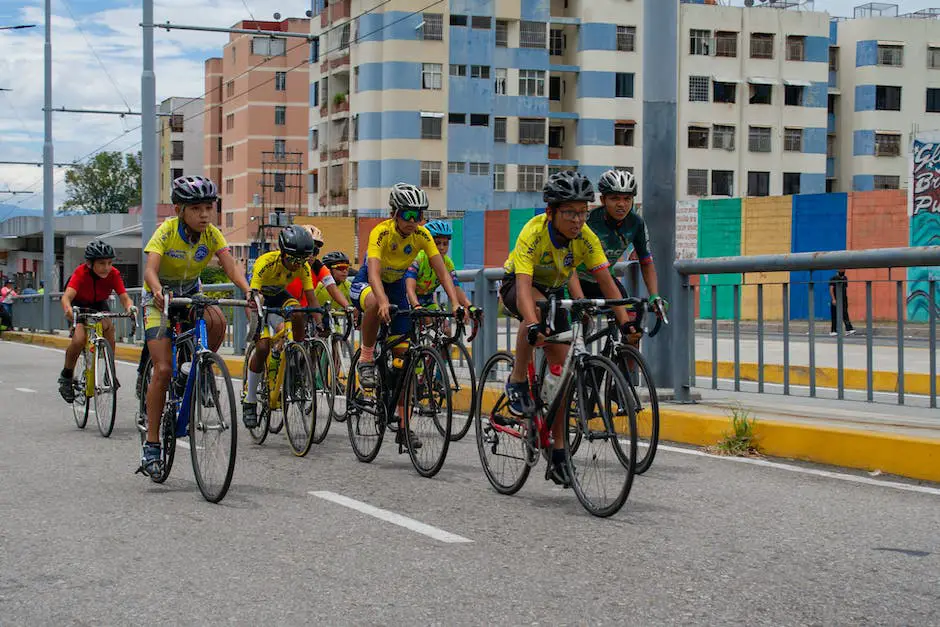Boost Your Cycling Confidence: Tips & Tricks
For cycling enthusiasts and hobbyists, boosting your cycling confidence is essential for achieving your goals, enjoying your rides, and overall improving your experience. In this guide, we will cover a variety of topics to help you feel more confident on the saddle, from overcoming fear and anxiety to mastering cycling techniques, bike maintenance, road safety, group riding etiquette, fitness, goal setting, gear and accessories, and participating in events.
Overcoming Fear of Riding
Title: Overcoming Fear of Riding: Boost Your Cycling Confidence
Introduction:
Cycling is a fantastic outdoor activity and an efficient mode of transportation. However, fear and anxiety can hinder your progress and enjoyment on the bike. In this guide, we will provide you with strategies to overcome these obstacles and help boost your cycling confidence.
1. Understand your fear
Start by identifying the root cause of your fear. Is it the fear of falling, traffic, or riding in a group? By recognizing what exactly causes your anxiety, you can develop targeted strategies to address those specific issues.
2. Learn and practice the basics
Familiarize yourself with your bike, its parts, and how they function, so you feel confident in handling it. Practice necessary skills such as braking, shifting gears, signaling, and balancing in a safe environment like an empty parking lot or a quiet street. This will help you build a strong foundation and feel more in control of your bike.
3. Gradual exposure
Gradually expose yourself to situations that trigger your fear. Initially, you might want to avoid busy streets or challenging terrains. As your confidence grows, incrementally tackle more challenging situations. Push your boundaries slowly, and don’t be afraid to take breaks when needed.
4. Ride with a buddy
Having a friend to ride with can provide a sense of security and boost your confidence. Choose someone with experience who can provide tips, encouragement, and assistance when needed. Riding with a buddy also makes the experience more enjoyable.
5. Attend cycling classes or workshops
Participate in cycling classes or workshops in your area. These can help you learn new skills and techniques that will enhance your riding experience. You might also meet fellow cyclists at these events to share your experiences and exchange valuable information.
6. Visualize success
Imagine yourself riding confidently and mastering the aspects you find challenging. Visualization can help reinforce positive outcomes in your mind and help you build confidence. Practice this technique regularly, especially before heading out on a ride.
7. Stay relaxed
Adopt a relaxed riding posture, with bent elbows and a loose grip on the handlebars. This can help you maintain better control over your bike and absorb bumps on the road. Practice deep breathing to help you stay calm and focused.
8. Observe and learn from experienced cyclists
Watch experienced cyclists navigate challenging situations and try to learn from their techniques. YouTube videos, cycling forums, and blogs can be a valuable source of tips and advice. Be open to learning from others and incorporating their strategies into your riding style.
9. Equip yourself with safety gear
Wearing appropriate safety gear can drastically reduce the risks associated with cycling. Helmets, gloves, reflective clothing, and bike lights are essential to increase your visibility on the road and protect you in case of falls.
10. Celebrate your progress
Acknowledge your achievements and celebrate your progress. Set short-term and long-term goals for yourself and reward yourself when you reach them. Recognizing your improvements will encourage you to continue pushing through your fears and boosting your cycling confidence.
Conclusion:
Overcoming the fear of riding takes time, practice, and persistence. By implementing the strategies outlined in this guide, you will gradually build your confidence, enhance your skills, and enjoy cycling to the fullest. Stay patient, and remember that every cyclist, regardless of their experience, started as a beginner.

Mastering Cycling Techniques
Title: Mastering Cycling Techniques: Boost Your Confidence and Ride Like a Pro
Cycling is a rewarding and enjoyable activity that offers numerous benefits, from improving your physical fitness to reducing stress. However, many cycling enthusiasts and hobbyists may find it challenging to master certain techniques that are essential for a more confident and efficient cycling experience. If you’re one of them, fear not! This guide will walk you through understanding and practicing proper cycling techniques, including balance, braking, cornering, and riding in various terrains, so you can boost your cycling confidence and ride like a pro.
Step 1: Establishing Balance and Control
- Find the right bike size: Ensuring that your bike is the appropriate size for your body is crucial for maintaining balance and control on the bike. Stand over the bike with both feet flat on the ground, you should have about 1 to 3 inches of clearance between your body and the top tube.
- Adjust your saddle height: Your legs should be fully extended with your heel on the pedal at its lowest point, with a slight bend at the knee. This position will allow you to maintain optimal balance and control while pedaling.
- Practice balance drills: Improve your balance and control by practicing simple exercises like track standing (balancing on the bike without pedaling), slow-speed riding, and one-handed or no-handed cycling in a safe, traffic-free environment.
Step 2: Mastering Braking Techniques
- Use both brakes: Your bike has front and rear brakes; use them simultaneously but apply slightly more force to the front brake as it holds more stopping power.
- Practice progressive braking: Gradually apply pressure on your brakes instead of slamming them, as this prevents skidding and helps maintain control during the braking process.
- Anticipate your stops: Scan the road ahead and stay aware of any obstacles or changes in terrain to give yourself enough time to brake smoothly.
Step 3: Perfecting Cornering Techniques
- Approach at the right speed: Slow down before entering a corner, then maintain a consistent speed throughout the turn to ensure stability and control.
- Position your body correctly: As you enter the corner, drop your outside foot to the lowest point of your pedal stroke, and apply pressure to the pedal. Lean your bike (not your body) into the corner while maintaining a centered, balanced position.
- Look where you want to go: Keep your eyes focused on the exit of the corner and your desired path, which helps guide your bike through the turn.
Step 4: Conquering Various Terrains
- Uphill Climbing: Shift to a lower gear and maintain a consistent cadence, as using too much force can wear you out quickly. Keep your hands on the top of your handlebars, and maintain an upright riding position, while keeping your weight centered on the saddle.
- Downhill Descending: Stay in control by shifting your weight back to keep traction on the rear wheel. Use both brakes to slow down, but avoid locking up either wheel. Keep your body relaxed and let the bike move freely beneath you to absorb bumps.
- Riding on gravel or dirt: Relax your grip on the handlebars and let your bike move naturally beneath you. Maintain a slightly lower tire pressure to increase traction and minimize the risk of flats. Slow down and be cautious when taking corners.
Conclusion:
By understanding and practicing proper cycling techniques, you can vastly improve your balance, control, and overall cycling confidence. Remember, practice makes perfect! Dedicate time to practice these skills, and soon you’ll be able to conquer any terrain with ease and ride like a pro. So, gear up, and enjoy the ride!

Photo by pgreen1983 on Unsplash
Bike Maintenance and Troubleshooting
Title: Bike Maintenance and Troubleshooting: A Guide to Boosting Your Cycling Confidence
Introduction:
Whether you’re a novice or an experienced cyclist, maintaining your bicycle and being able to troubleshoot issues on the go is crucial for a safe and smooth ride. In this guide, we will cover common bike maintenance tasks and how to troubleshoot common issues to help you become a confident and self-reliant cyclist.
Part 1: Regular Bike Maintenance
-
Cleaning your bike
– Wipe down the frame, wheels, and other components with a damp cloth.
– Use a gentle degreaser to clean the chain, cassette, and derailleur.
– Rinse with a low-pressure hose and use a soft brush to remove any remaining dirt.
– Dry your bike thoroughly using a clean, dry cloth. -
Lubricating your chain
– Apply a dedicated bike chain lubricant to the entire chain.
– Spin the pedals backward to distribute the lubricant evenly.
– Wipe off any excess lube to prevent dirt buildup. -
Checking tire condition and pressure
– Inspect your tires for cuts, cracks, or excessive wear.
– If needed, replace your tires with new ones.
– Use a bike tire pump with a pressure gauge to inflate your tires according to the manufacturer’s recommended PSI. -
Inspecting and adjusting brakes
– Check your brake pads for wear and replace them if necessary.
– Ensure that your brake cables are properly secured and tensioned.
– Adjust your brake levers for proper reach and responsiveness. -
Inspecting and adjusting gears
– Examine your derailleur for damage or misalignment.
– Check the tension and condition of your gear cables.
– Adjust your gears for smooth shifting by using the barrel adjusters or consulting a professional bike mechanic.
Part 2: Troubleshooting Common Bike Issues
-
Flat tire
– Remove the wheel from the bike.
– Use tire levers to remove the tire and inner tube from the rim.
– Inspect the tire and inner tube for punctures or damage.
– Patch or replace the tube, if necessary.
– Inflate and reinstall the tire and wheel. -
Slipping or skipping gears
– Check your chain for wear or stiff links; replace it if necessary.
– Inspect your cassette for worn or bent teeth; replace it if needed.
– Make sure your derailleur is properly aligned and adjusted. -
Squeaky brakes
– Clean and dry your rims thoroughly.
– Apply a dedicated brake cleaner to your brake pads and rims.
– Sand the surface of your brake pads lightly with fine-grit sandpaper.
– Adjust your brake alignment and toe-in for optimal performance. -
Loose headset
– Ensure that your stem bolts are evenly and securely tightened.
– Check your headset bearings for wear or damage; replace them if needed.
– Adjust your headset tension by tightening or loosening the top cap bolt. -
Misaligned or wobbly wheel
– Inspect your spokes for damage or uneven tension.
– Use a spoke wrench to true your wheel or consult a professional bike mechanic.
– Check your wheel’s bearings and hub for wear or damage; replace them if necessary.
Conclusion:
By mastering these bike maintenance and troubleshooting skills, you will be able to boost your cycling confidence and enjoy a safer, smoother, and more enjoyable ride. Remember to always pack a basic bike tool kit, spare inner tube, and a portable bike pump during your rides to tackle any issues that may arise on the go. Happy cycling!

Road Safety and Traffic Rules
Title: Boosting Your Cycling Confidence: Road Safety and Traffic Rules
Introduction:
Cycling is a fun and eco-friendly mode of transportation that offers numerous physical and mental health benefits. However, in order to have a safe and enjoyable experience, it’s crucial to familiarize yourself with road safety and traffic rules. This guide will provide you with essential information on navigating through different traffic situations confidently and effectively.
1. Know your bicycle:
Before hitting the road, make sure you are well-acquainted with your bicycle. Understand its various components such as brakes, gears, and lights to ensure smooth functioning in all types of scenarios. Regularly inspect your bike for any damages or maintenance issues. Also, make sure to adjust your saddle and handlebar for a comfortable fit.
2. Wear appropriate gear:
Invest in a good quality helmet that fits you well to protect your head from potential injuries. Besides, wear bright and reflective clothing to increase your visibility, especially during low light conditions or night time. Gloves, sunglasses, and weather-appropriate attire will also provide added comfort and protection.
3. Ride defensively:
Always be aware of your surroundings and anticipate potential hazards. Continuously scan the road for vehicles, pedestrians, and other obstacles. Ride at a safe distance from parked cars and be prepared for the unexpected, such as doors opening or vehicles pulling out.
4. Master essential skills:
Practice essential cycling skills such as braking, turning, and shifting gears to increase your confidence on the road. Learn to maneuver your bike around obstacles and signal your intentions to other road users when changing lanes or turning.
5. Follow traffic rules and signals:
As a cyclist, you are required to follow traffic rules and regulations just like any other vehicle on the road. Obey all traffic signals, stop signs, and yield the right of way as required. Ride in the same direction as traffic and use designated bike lanes when available.
6. Be visible:
Equip your bike with front and rear lights to make yourself more visible to motorists, especially during dawn, dusk, or night time. Consider adding reflective stickers or tapes to your bike or helmet to boost your visibility further. While riding, make eye contact with drivers and other road users to ensure they are aware of your presence on the road.
7. Communicate with road users:
Use hand signals to communicate your intentions when making turns or changing lanes. Always look over your shoulder before making any moves on the road to double-check for oncoming traffic. Be respectful towards other road users and give them ample space whenever possible.
8. Plan your route:
Select routes that are most suitable for cycling and avoid dangerous or high-traffic areas. Opt for bike lanes, bike boulevards, or quiet neighborhood streets whenever possible. Familiarize yourself with your route and identify any potential hazard or challenging spots in advance.
9. Learn and respect local laws:
Familiarize yourself with the specific bicycle laws and regulations in your city or state. This could include rules about helmet use, biking on sidewalks, right of way, bike lane usage, and other essential aspects related to cycling. Adhering to local laws will keep you safe and prevent any legal issues.
10. Stay calm and focused:
Lastly, it’s crucial to remain calm and focused while cycling in traffic. Stay alert and pay attention to your surroundings at all times. Avoid distractions such as using headphones, texting, or engaging in other activities that might impair your concentration.
Conclusion:
By following these guidelines, you’ll feel more confident and secure while cycling on the road. Keep practicing, honing your skills, and adhering to traffic rules and road safety guidelines. Remember, the more experience you gain, the more comfortable and self-assured you’ll become. Happy cycling!

Photo by angelopantazis on Unsplash
Group Riding Etiquette
Title: Group Riding Etiquette: Boost Your Cycling Confidence
As an enthusiastic cyclist, group riding can be a fun and rewarding experience that encourages camaraderie and boosts confidence. However, it’s essential to understand group dynamics and proper etiquette to ensure everyone’s safety and enjoyment. In this guide, we’ll go over some of the key aspects of group riding etiquette that can help you feel more comfortable and confident in social cycling situations.
1. Communication is key:
Ensure proper communication with your fellow riders by using hand signals and verbal cues to alert them to any potential hazards, obstacles, or upcoming turns. Make sure to call out road hazards like potholes or debris, as well as any changes in speed or direction. Remember that clear communication keeps everyone informed and safe.
2. Ride close, but not too close:
When riding in a group, maintain a safe distance between your front wheel and the rear wheel of the rider in front of you. Typically, about two feet is a safe distance, although conditions and experience may require adjustments. Be careful not to overlap your wheels, as this can lead to accidents if the rider in front needs to slow down or change direction suddenly.
3. Hold your line and be predictable:
Ride in a straight, predictable line and avoid weaving or making sudden movements. When riding in a group, other cyclists rely on your predictability to maintain their own positioning and safety. Additionally, stick to your designated position within the group, such as single or double file, and do not deviate unless necessary.
4. Be aware of your surroundings:
Stay vigilant and attentive to things happening around you, such as traffic, road conditions, and the actions of other riders. Keep your head up and eyes forward, scanning for potential hazards or issues that may arise.
5. Be prepared to stop or slow down:
Always be prepared to slow down or stop if necessary, especially at intersections or when there’s a change in group dynamics, such as stopping for a mechanical issue. When slowing down or stopping, make sure to communicate clearly with your fellow riders using verbal cues and hand signals.
6. Practice good paceline etiquette:
When riding in a paceline—a single-file line of cyclists, each taking turns at the front and then rotating to the back—smoothly move to the front when it’s your turn, maintain a steady pace, and then gently pull off to the side to rotate to the back once your turn is finished. Keep an eye on the rider in front of you and maintain a consistent distance for optimal drafting benefits.
7. Be a team player:
Show consideration for other riders in the group by offering assistance if they have a mechanical issue, offering a snack or drink if they’re struggling, or just providing encouragement and support. While you should still ride at your own pace and within your abilities, showing solidarity can go a long way in building group cohesion and confidence.
8. Familiarize yourself with group ride rules and expectations:
Each group ride may have its own set of rules and expectations. Before joining a ride, familiarize yourself with these guidelines to ensure a smooth and enjoyable experience for all.
Conclusion:
By following these group riding etiquette tips, you’ll be better equipped to confidently participate in social cycling events and enjoy the unique benefits that come with group rides. Remember that practice makes perfect, and over time, your skills and confidence will continue to improve, making you a valued member of your cycling community.

Strengthening Mental and Physical Fitness
Introduction
Boosting your cycling confidence can have significant positive effects on your overall riding experience. Increasing your mental and physical fitness will not only make cycling more enjoyable, but it will also improve your stamina, endurance, and mental resilience. In this guide, we will outline various methods to help you strengthen your mental and physical fitness to boost your cycling confidence.
1. Warm-up and Stretching
Start incorporating regular warm-up and stretching sessions before and after your rides. This will help prevent injuries, improve flexibility, and increase blood flow to your muscles, which will benefit your overall fitness and cycling experience.
2. Strength Training
In addition to cycling, engage in strength training exercises such as bodyweight exercises, weightlifting, or resistance training. Focusing on strengthening your core, legs, and upper body will provide more stability, power, and, ultimately, confidence on the bike.
3. Interval Training
High-intensity interval training (HIIT) can help increase your overall fitness level by alternating between short periods of high-intensity exercise followed by periods of rest or low-intensity exercise. This type of training can improve both your aerobic and anaerobic fitness levels, which are crucial for a better cycling experience.
4. Cross-training
Incorporate other forms of cardio exercise, such as running or swimming, to improve your overall fitness and reduce the chance of injury from overuse. Cross-training can also help prevent boredom and keep you engaged in your fitness routine.
5. Mental Exercises
Practicing visualization techniques can help to reduce anxiety, increase motivation, and improve laser-like focus on your cycling goals. Visualization involves imagining yourself successfully completing a ride or overcoming a challenging hill.
6. Positive Self-Talk
Reframe your internal dialogue to focus on the positive aspects of your cycling journey. Replace negative thoughts with positive ones, such as “I can climb this hill” or “I am getting stronger with each ride.” Encourage yourself to keep pushing your limits and persevere through challenging rides.
7. Practice Consistency and Patience
Improving your mental and physical fitness requires dedication and patience. Establish a consistent cycling and training routine, and gradually increase the intensity of your workouts. Allow yourself to progress at a sustainable pace as you work towards your cycling goals.
8. Monitor and Reflect
Track your progress by logging your training sessions, including the duration, distance, and intensity of your rides. Reflect on your accomplishments regularly and celebrate your improvements, no matter how small. Acknowledging your progress will continue to boost your cycling confidence.
9. Join a Cycling Group
Meeting and riding with other cyclists can provide motivation and camaraderie. Riding with more experienced cyclists can also offer valuable tips and techniques to improve your riding skills and boost your confidence.
10. Rest and Recovery
Lastl,y do not underestimate the importance of rest and recovery. Overtraining can lead to burnout and injury. Allow adequate time for your body to recover and return to your cycling routine with renewed energy and enthusiasm.
Conclusion
Strengthening your mental and physical fitness is key to boosting your cycling confidence. By engaging in regular strength training, interval training, cross-training, and mental exercises, you will enhance your overall cycling experience. Practice consistency and patience, and enjoy the journey towards increased confidence and improved fitness on your bike.

Goal Setting and Tracking Progress
Title: Boosting Your Cycling Confidence: Goal Setting and Tracking Progress
Cycling is an activity that can improve fitness, provide a sense of accomplishment, and help you explore the great outdoors. Whether you’re a beginner, returning to cycling after a break, or an experienced rider looking to challenge yourself further, setting goals and tracking progress is key to boosting your confidence and maintaining motivation. This guide will provide tips and tricks on how to effectively set achievable cycling goals and track your progress throughout your journey.
Step 1: Define your cycling goals
Before you start working towards your goal, you need to know exactly what you want to achieve. Start by brainstorming your cycling objectives, which could include:
- Riding a certain distance (e.g., 50 miles)
- Participating in a charity bike ride or local race
- Improving your cycling fitness level
- Commuting to work by bike
- Conquering a challenging hill or terrain
Make sure your goals are SMART: Specific, Measurable, Achievable, Relevant, and Time-bound. This will help you create a clear plan and keep you focused on your objectives.
Step 2: Break your goals into smaller milestones
Breaking your cycling goals into smaller, achievable milestones can make them seem less daunting and provide a sense of accomplishment along the way. These smaller milestones might include:
- Increasing your weekly riding distance by a certain percentage
- Riding for a set number of minutes without stopping
- Completing a specific section of a challenging trail
Document these milestones and their deadlines in a notebook or a digital file, so you can easily track your progress.
Step 3: Create a training plan
Design a training plan that will allow you to work on specific skills and gradually increase your riding fitness. This plan should include:
- A balance of different types of cycling workouts (e.g., endurance rides, hill climbing, interval training)
- Rest days for proper recovery and to prevent burnout
- Time for skill-building, such as practicing cornering, quick stops, or riding in a group
Make sure to adjust your training plan as needed to accommodate your progress or any obstacles that may come up.
Step 4: Monitor your progress
Regularly tracking your progress is essential to maintain motivation and ensure you’re on track to achieve your goals. Some methods of tracking your progress include:
- Recording your rides in a training log or using a cycling app
- Taking part in group rides to gauge your improvement against others
- Testing yourself with time trials or personal challenges
It’s also important to celebrate improvements and milestones, even if they’re small. This can provide a confidence boost and motivate you to keep pushing forward.
Step 5: Adjust your goals as needed
Don’t be afraid to adjust your goals if you find that they’re too easy or too difficult, or if your interests change. Flexibility is essential for staying motivated and ensuring continuous progress.
Step 6: Seek support from others
Joining a local cycling club or online community can provide valuable support, advice, and motivation. Sharing your goals with others can help keep you accountable and provide an extra source of encouragement as you work towards them.
Conclusion
By effectively setting SMART goals and tracking your progress, you can maintain motivation and boost your cycling confidence. Don’t forget to celebrate your achievements along the way, and remember that flexibility is key to continued growth and improvement. Happy cycling!
![]()
Cycling Gear and Accessories
Title: Boost Your Cycling Confidence with these Essential Cycling Gear and Accessories
Introduction: Cycling is a fantastic way to stay active, explore your surroundings, and challenge yourself. But to get the most out your biking experience and boost your confidence on the road, equipping yourself with the right gear and accessories is essential. This guide will walk you through some key items that will enhance your comfort, safety, and performance while cycling.
1. Helmet:
The most important piece of cycling gear for your safety is a helmet. It protects your head in case of falls, collisions, or any other accidents. Choose a helmet that fits comfortably, has ample ventilation, and meets safety certification standards. Your helmet should fit snugly so that it doesn’t move around easily when cycling.
2. Proper Clothing:
Wear comfortable and breathable clothes that are suitable for the weather conditions. Opt for moisture-wicking materials to keep you cool and dry during your rides. Cycling shorts with padded chamois are essential for long distances to prevent chafing and improve comfort. In colder weather, consider wearing layers, and don’t forget a waterproof jacket if there’s a chance for rain.
3. Gloves:
Padded gloves provide comfort and protection for your hands during long rides. They can help reduce numbness and vibrations while providing extra grip on your handlebars. Gloves can also protect your hands in case of a fall or accident.
4. Cycling Shoes:
Invest in a good pair of cycling shoes that are specifically designed for the type of cycling you will be doing (road or mountain biking). These shoes have stiffer soles and clip-in mechanisms for added stability and more efficient pedaling.
5. Eyewear:
Protect your eyes from the sun, wind, and debris by wearing cycling glasses. They should have a comfortable fit and offer UV protection. Consider getting lenses that are photochromic, meaning they’ll adapt to the changing light conditions.
6. Bike Lights:
Bike lights are essential for improving your visibility in low light conditions or when riding at night. Front and rear lights will help you see and be seen by motorists and other cyclists. Look for lights that are easy to install and have multiple light settings, such as steady or flashing mode.
7. Reflective Gear:
Along with bike lights, increase your visibility to other road users by using reflective gear, such as vests, stickers, or ankle bands. This equipment will reflect light, making it easier for motorists to see you in low light conditions.
8. Bike Computer or GPS:
Track your progress and monitor your performance with a bike computer or GPS device. These devices can provide you with valuable information including speed, distance, and route guidance. Some also offer heart rate monitoring and other fitness tracking features.
9. Saddle Bag or Backpack:
To carry essential items like a spare tire, repair kit, water bottle, and snacks during your rides, use a saddlebag or a cycling-specific backpack. These bags should be lightweight, easy to access, and secure enough to hold your items.
10. Water Bottle and Cage:
Stay hydrated during your rides, especially in hot weather, by equipping your bike with a water bottle and cage. Choose an insulated bottle to keep your water cool or hot, depending on the weather conditions.
Conclusion: Arming yourself with the right cycling gear and accessories can significantly improve your comfort and safety while riding. By exploring these different items, you’ll be on your way to boosting your overall cycling confidence and enjoying your biking experience to the fullest. Remember to practice safe biking habits and always observe traffic rules and regulations to ensure a safe and enjoyable ride for all.

Participating in Events and Races
Cycling events and races are excellent opportunities for enthusiasts and hobbyists to boost their cycling confidence, learn new skills, and connect with fellow cyclists. Participating in such events can be both exhilarating and rewarding while helping you improve your cycling abilities. Here are some steps to help you get started with participating in cycling events and races.
- Research local and regional events: Look for cycling events and races in your area that cater to various skill levels and types of cycling. Many communities host charity rides, Gran Fondos, criteriums, and mountain bike races that may interest you. Join local cycling clubs, subscribe to cycling newsletters, and follow cycling-related social media accounts to stay updated on upcoming events.
- Choose your event: With so many different types of cycling events available, it’s important to find one that suits your skill level, fitness, and preferences. For beginners, consider shorter, less competitive events such as charity rides or group rides. As your confidence and skills grow, you may want to try more competitive races or events with greater distances and challenges.
- Train and prepare: Once you have chosen an event, create a training plan to help you build your cycling fitness and confidence. If you’re new to cycling or racing, consider joining a local cycling club or group that offers training rides or clinics. Practice riding in different conditions, familiarizing yourself with various terrains, and improving your bike handling skills. Make sure your bike is in good working order and that you have all the necessary gear and equipment.
- Register for the event: Many events require pre-registration, so make sure you secure your spot by completing the necessary forms and paying any applicable fees. Some events may also require a license or membership with a cycling organization, such as USA Cycling, so make sure you have completed all the necessary steps.
- Understand the rules: Each event may have specific rules and guidelines, so it’s crucial to familiarize yourself with them beforehand. This may include rules about drafting, equipment requirements, and course etiquette. Knowing and understanding the rules will help you have a safe and enjoyable experience during the event.
- Attend pre-event activities: Many cycling events offer pre-event activities, such as group rides, race clinics, or course previews. These activities can help you familiarize yourself with the event, the course, and fellow participants. Participating in pre-event activities can help you feel more comfortable and confident on the day of the event.
- Race day preparation: Arrive at the event early and give yourself plenty of time to warm up, check-in, and get situated before the start. Make sure your bike is in good working order, and that you have water, snacks, and any necessary gear. Take time to mentally prepare yourself, focusing on your goals for the event, and reminding yourself of your training and preparation.
- Enjoy the event and learn from the experience: During the race or event, stay focused on your goals, pace yourself, and remember to have fun. At the end of the event, take time to reflect on your performance, congratulate yourself on your accomplishment, and consider any areas for improvement. Connecting with other cyclists and sharing your experiences can provide valuable insights and inspiration for future events.
By following these steps, you can participate in cycling events and races to boost your confidence, improve your skills, and build connections with fellow cyclists. Remember always to prioritize safety, sportsmanship, and enjoyment throughout your cycling journey.

By considering these aspects, you can approach your cycling journey with determination and enthusiasm, continually boosting your confidence and performance on the road or trail. Embrace the learning process, grow as a cyclist, and find your biking tribe to support you along the way. The world of cycling awaits!
